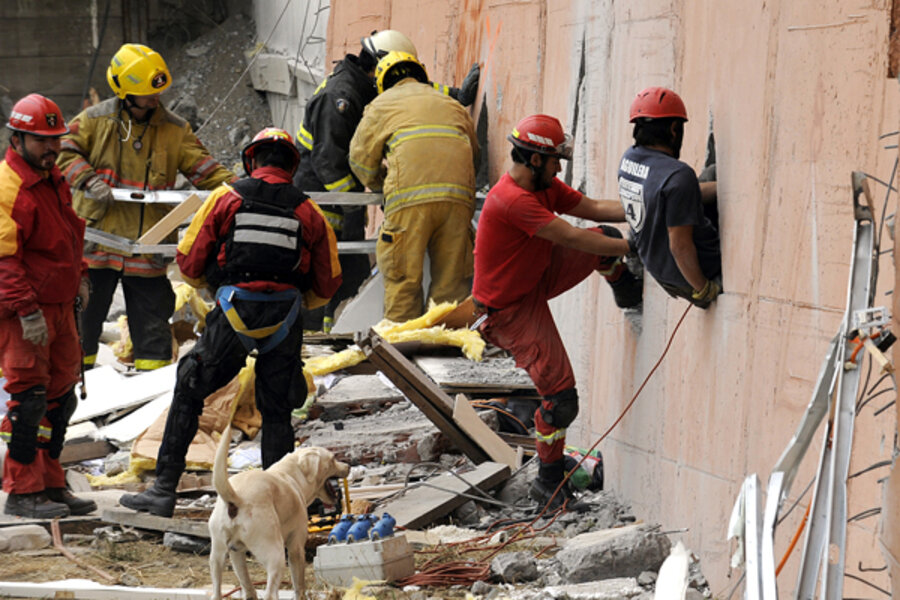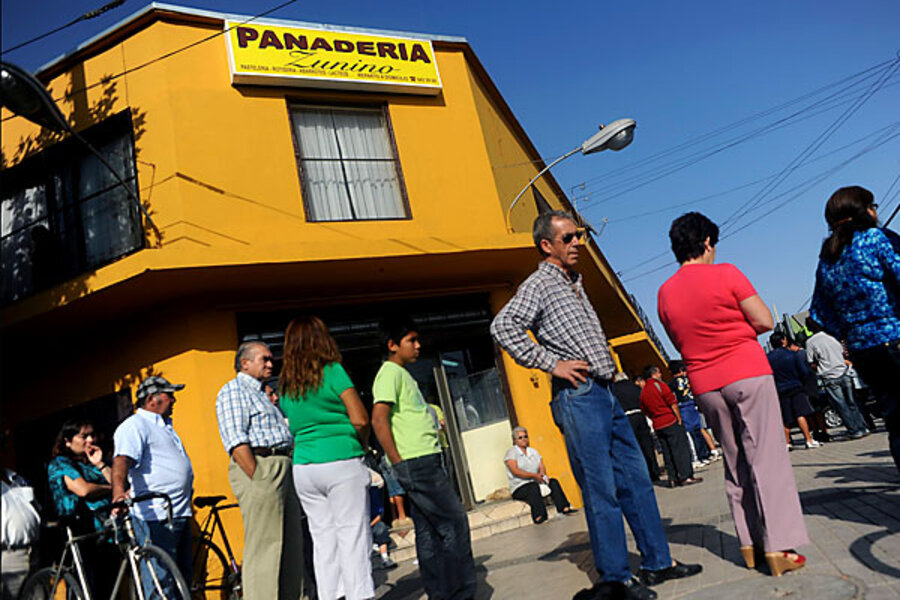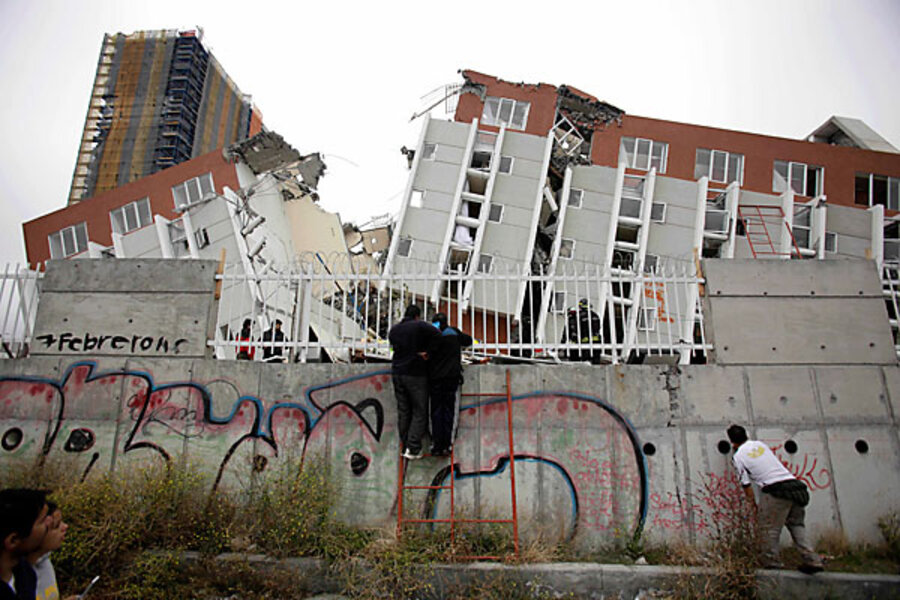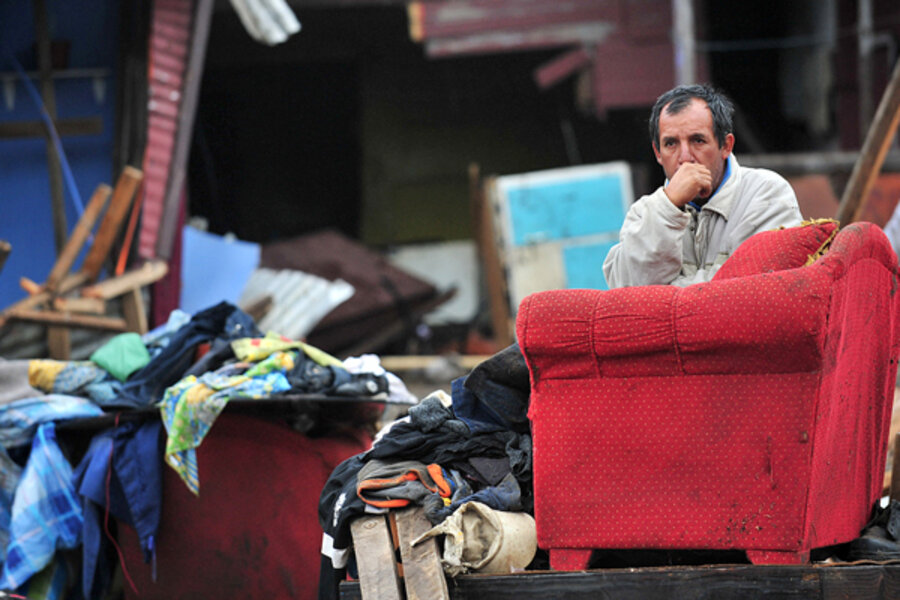Chile earthquake: The morning after
Loading...
| Santiago, Chile
One day after Chile was struck by its worst earthquake in half a century – a massive 8.8 tremblor – the streets of the capital, Santiago, are mostly quiet.
This is normal for a city not known for its early risers. Still, this is hardly any given Sunday for Santiago’s approximately 6 million residents, who are cautiously beginning to move on with their lives.
Electricity is still out in isolated sectors of the city, where several bridges, highways, and other vital infrastructure, including the international airport, suffered significant damage in Saturday morning’s 8.8-magnitude quake.
IN PICTURES: Images from the 8.8 magnitude earthquake in Chile
A 24-unit apartment building in the western borough of Maipu totters on the verge of total collapse and shards of broken glass still sparkle in the downtown streets. Pedestrians step gingerly to avoid sections of sidewalk where police have cordoned off piles of yet-to-be-cleared chunks of concrete, brick, and tile shaken loose during the disaster. In the meantime, powerful aftershocks continue to hit the capital. A 6.1-magnitude tremor struck just before 8:30 a.m.
Santiago’s children were supposed to begin a new school year Monday. Instead schools are to remain closed at least another week, President Michelle Bachelet, who leaves office March 11, told the nation during a televised address Saturday night.
“It’s a major tragedy, the post powerful [earthquake] in Chile in the last 50 years,” she said. “In the name of all Chileans, I express my true sorrow to the victims.”
Could have been much worse
Yet considering the magnitude of the event, most people here agree that Santiago – home to roughly a third of Chile’s population – fared surprisingly well.
The fierce earthquake was the largest in Chile since a 9.5-magnitude “megaquake” stuck the southern city of Valdivia in 1960. The Valdivia earthquake stands as the most powerful recorded anywhere in the world.
Back to work
By Saturday afternoon, once electricity was restored in most of the city, many businesses began to reopen. Santiago’s modern metro system resumed service Sunday morning, buses are back in operation, and many people, among them Hector Moraga, the owner of a downtown newspaper stand, are making an effort to resume their normal routines.
“I think it’ll be a week or two before things get totally back to normal,” says Mr. Moraga. “We all have to get back to work. As [soccer star] Humberto Suazo says, we have to dig in. We’re real dogs for work. We like it. Especially if we get some help from the state, we’ll get through this.”
Death toll near epicenter could rise
Concern now is mostly directed toward Chile’s Bio Bio and Maule Regions, closer to the epicenter, where the death toll – currently at about 300 – continues to rise.
Dozens of people are reportedly trapped in collapsed buildings in Concepcion, Chile’s second largest city. In nearby Talcahuano, a localized tsunami swept over residences, dumping a boat in the city center. Other coastal communities have suffered the same fate.
In her address, Ms. Bachelet warned it would be another 48 to 72 hours before authorities have a clear picture of the true scope of the disaster.
“The situation is extremely serious right now. We’re going to need a lot of help," says Luis Enrique Diaz, an 80-year-old Santiago resident. “We can’t just say, 'Well, nothing happened to me,' because there are people here who did have things happen to them. We can’t be indifferent to what’s happening in Concepcion, in Maule. We can’t just preach. We have to do something.”
IN PICTURES: Images from the 8.8 magnitude earthquake in Chile








